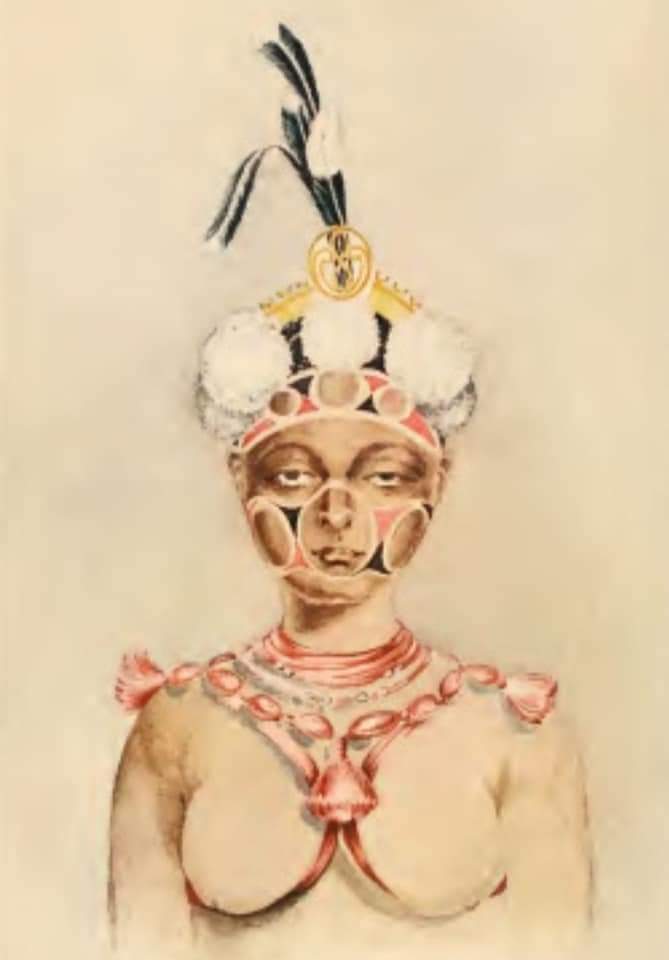
Among the traditions of the Southern Igbo, taking on a title was a rare practice, but those who did were respected as ancestors (ndeichie). One prominent title was that of the Lolo. The Lolo title originated and is exclusive to the Southern Igbo, particularly in the Ohuhu/Ngwa region. It was only attained by women of great wealth, prestige, or achievement.
It’s important to clarify that a Lolo is not the wife of a chief or an Eze’s wife. Being referred to as Chief Mrs. does not automatically make a woman a Lolo. The position of Lolo is a priestess in her own right and she performed religious sacrifices in a society that was otherwise patriarchal. It was a highly esteemed title that women had to earn on their own merits.
Before a woman could obtain the prestigious Lolo title, she had to undergo spiritual fortification and the “lwhoahìa” ritual. Only successful farmers with large quantities of cocoyam (òba ede) and various livestock like goats, sheep, and fowls (òba akù) could reach such heights. Once qualified, the woman would don anklets or beads on her ankles (“nkalarì”) as a symbol of her status.
The position of Lolo was equivalent to that of an Eze, and among the Northern Igbo, they had a similar organization known as Agbala Nwaanyi or Eze Nwaanyi.
To become a Lolo, a woman had to undergo the Ítúanya ceremony, which was a rite of passage common in areas like Etche, Ohaji, and Ohuhu(Mbaise). It served as a spiritual fortification for young men transitioning into adulthood. Various clans specialized in priestcraft, such as Ozuzu Etche, which focused on Amadioha priests. Ítúanya and Iwhoahía were closely connected, and in the past, both were required before obtaining titles like Lóló (reserved for women of prestige). In Ohuhu clans like Ekwereazu and Obowo, every able-bodied young man had to complete Ítúanya before qualifying for Iwa-akwa.
Ítúanya involved passing through various rites and stages of sacrifices, including an unusual practice of boiling different odd animals, like reptiles, snails, toads, and frogs, in a big pot. The individual would be blindfolded and required to dip their hand into the pot, grabbing anything without selection, and immediately consuming it without showing any emotions. Ítúanya lasted for one traditional week (approximately 8 days), followed by Iwhoahía.
Iwhoahía was a process in which the woman would run around the market square, wearing only loin clothes, waist beads, brass anklets (nkalari), and beads or necklaces (okoh), with her body adorned with Uri art (traditional henna tattoos). Upon completing this ritual, the woman would assume her rightful place as a Lolo. A Lolo was highly respected and had the authority to bless kolanut, inherit land and properties in her own name, and have children who carried her name.
Among the Ohuhu-Ngwa, there was a specific title known as Lolo Ede, exclusively granted to women of great wealth who achieved remarkable success in cocoyam farming and harvest. Before the ritual for taking on the title, the woman’s cocoyam barn had to be inspected by senior Lolo Ede to ensure it met the requirements. This title could be considered the female equivalent of Ezeji, as these women acted as priestesses or mediators between the people and Nguma (a local fertility deity) and Ajoku.
Unfortunately, the meaning of the Lolo title has been lost and is being misused and misunderstood due to our current lack of knowledge and awareness.








Thank you for your help and this post. It’s been great. http://www.hairstylesvip.com